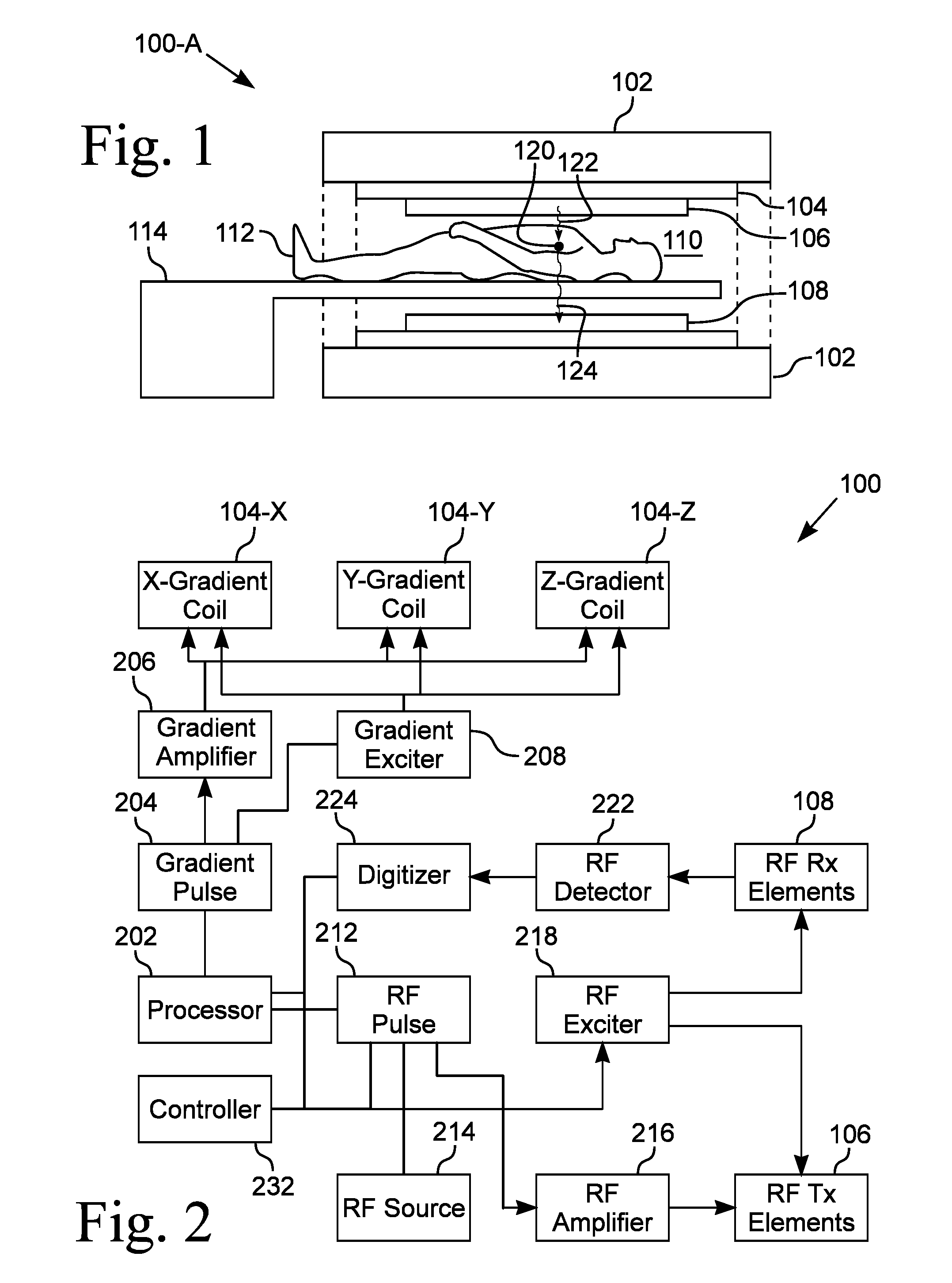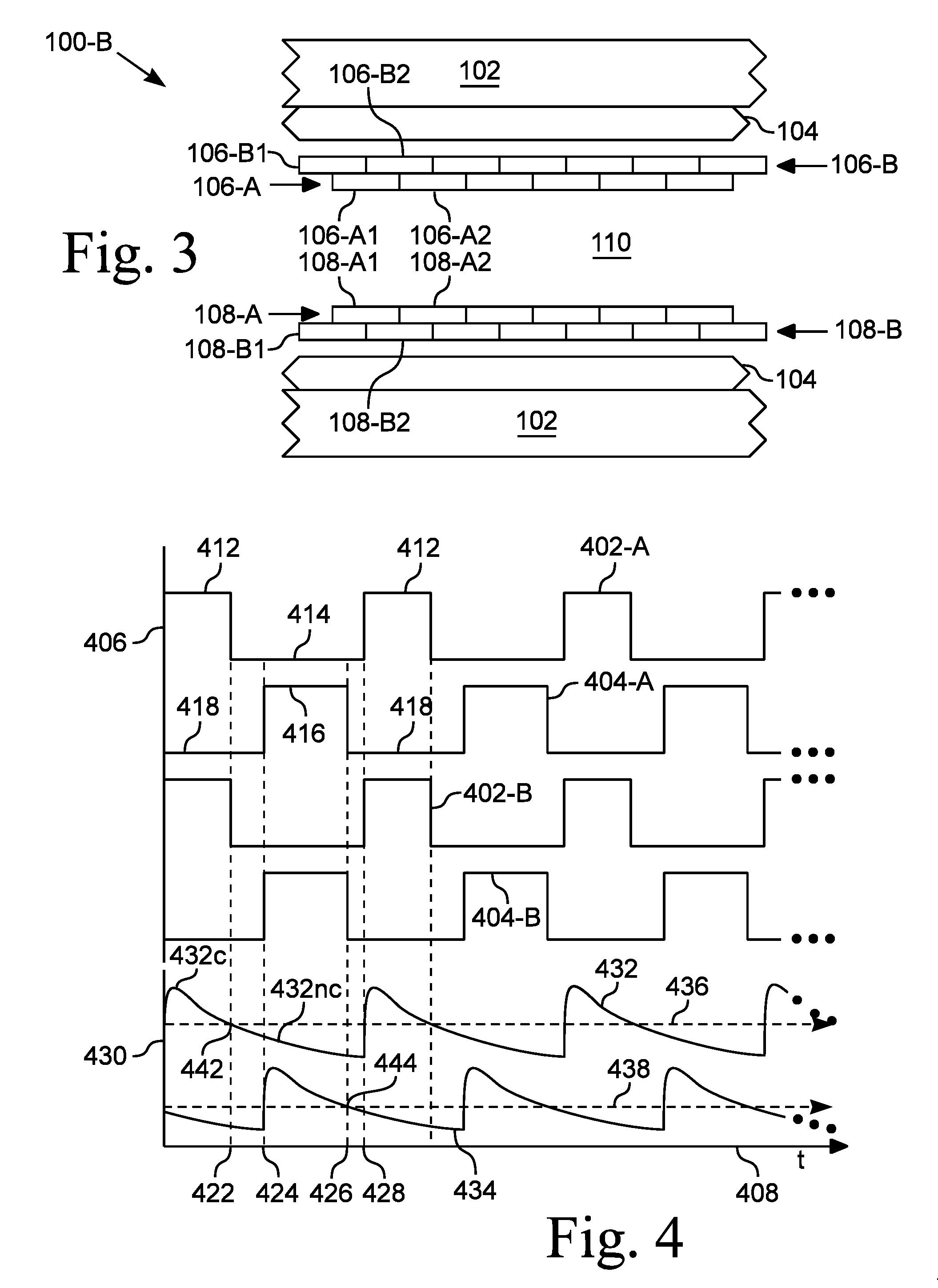Plasma elements in medical imaging devices
- Summary
- Abstract
- Description
- Claims
- Application Information
AI Technical Summary
Benefits of technology
Problems solved by technology
Method used
Image
Examples
first embodiment
[0075]FIG. 8 illustrates a schematic of an RF exciter 218-A for a plasma device 710, such as a transmitting element 106. The material inside the vessel 714, before it changes state to be plasma 716, must be excited or ionized. FIG. 8 illustrates one such excitation circuit 218-A that creates a plasma 716 inside the vessel 714. In various embodiments, the RF exciter 218 includes an excitation circuit 218-A such as the one illustrated in FIG. 8.
[0076]The excitation circuit 218-A is a Marx Generator that generates high-voltage pulses from a low voltage direct current power supply 802. The plasma device 710 includes one or more electrical connections 812 that are electrodes that complete the electrical circuit between the external components 218 and the plasma 716 inside the vessel 714. A plasma 716 is generated when a material become an ionized gas through excitation or ignition. Generating a plasma 716 is accomplished by the application of an electric and / or magnetic field, RF heating...
second embodiment
[0079]FIG. 9 illustrates a schematic of an exciter 218-B for a plasma device 710. The excitation circuit 218-B is a modified Marx Generator that has insulated gate bipolar transistors (IGBT) as switches 902-A, 902-B instead of the spark gaps 808-A, 808-B. The switches 902-A, 902-B perform similar functions as the spark gaps 808-A, 808-B, except that operation of the switches 902-A, 902-B is controlled by signals applied to the gate connections 804-A, 804-B instead of when the charge accumulates on the capacitors 806 such that the breakdown voltage is reached.
[0080]A first signal at a triggering level is applied to the gate connection 904-A of the first switch 902-A, which places the capacitors 806-A, 806-B in series, effectively doubling the voltage of the power source 802. A second signal at a triggering level is applied to the gate connection 904-B of the second switch 902-B at about the same time as the first signal is applied to the first gate connection 904-A. The second switch...
third embodiment
[0081]FIG. 10 illustrates a schematic of an exciter 218-B for a plasma device 710. The illustrated embodiment of the exciter 218-C is a general form of an excitation circuit. A timer 1002 provides a trigger signal to the gate connection 904-C of a switch 902-C. The switch 902-C is in series with a high voltage power source 1004, which is connected to the lead 812 of the plasma device 710.
[0082]The timer 1002, in various embodiments, is a circuit of discrete components, an integrated circuit, or a timer software program controlling an output of the processor 202 or controller 232. The timer 1002 provides a timing signal, such as the ones that generate the waveforms 402, 404 illustrated in FIG. 4, to the switch 902-C. The timer 1002 and switch 902-C form a pulse driver circuit that drives a high voltage source 1004. In one embodiment, the source 1004 is an excitation circuit 218-B, such as the one illustrated in FIG. 8, with the switch 902-C driving the gate connections 904-A, 904-B.
[...
PUM
 Login to View More
Login to View More Abstract
Description
Claims
Application Information
 Login to View More
Login to View More - R&D
- Intellectual Property
- Life Sciences
- Materials
- Tech Scout
- Unparalleled Data Quality
- Higher Quality Content
- 60% Fewer Hallucinations
Browse by: Latest US Patents, China's latest patents, Technical Efficacy Thesaurus, Application Domain, Technology Topic, Popular Technical Reports.
© 2025 PatSnap. All rights reserved.Legal|Privacy policy|Modern Slavery Act Transparency Statement|Sitemap|About US| Contact US: help@patsnap.com



